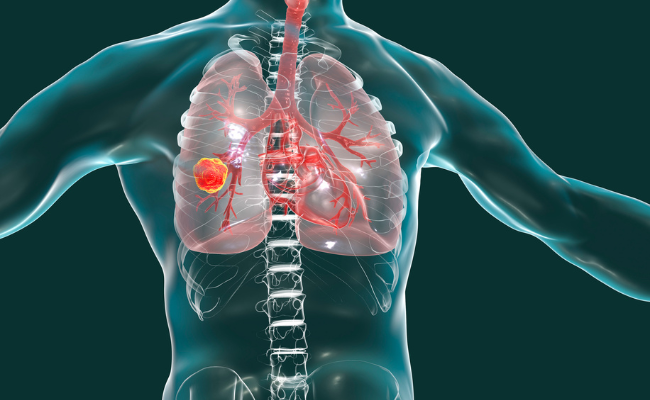How to Treat Hereditary Hemorrhagic Telangiectasia?
- December 16, 2023
- No Comments
What is Hereditary Hemorrhagic Telangiectasia (HHT)?
Hereditary Hemorrhagic Telangiectasia (HHT), or Osler-Weber-Rendu syndrome, is a rare genetic disorder affecting blood vessels. This condition involves abnormal capillaries, known as telangiectasias, and irregular connections between arteries and veins, termed arteriovenous malformations (AVMs). These fragile blood vessels can burst, leading to bleeding and various complications, with symptoms varying based on their location within the body.
HHT, an autosomal dominant disorder, poses a 50% chance of transmission to offspring. It manifests with the formation of abnormal blood vessels impacting organs like the nose, lungs, brain, and gastrointestinal tract. The fragility of these vessels underscores the complexity and variability of symptoms associated with HHT, emphasizing the need for comprehensive understanding and management.
Why Does Hereditary Hemorrhagic Telangiectasia Occur?
HHT is primarily caused by mutations in certain genes that regulate blood vessel formation and maintenance. Mutations in the ENG (endoglin) and ACVRL1 (activin receptor-like kinase 1) genes are commonly associated with HHT. These mutations lead to the development of abnormal blood vessels that are prone to bleeding, resulting in the characteristic symptoms of the disorder.
How Does Hereditary Hemorrhagic Telangiectasia Manifest?
The clinical presentation of HHT varies widely among affected individuals. Common symptoms include recurrent nosebleeds (epistaxis), telangiectasias (small red or purple spots caused by dilated blood vessels) on the skin and mucous membranes, and AVMs in various organs. AVMs can lead to more severe complications, such as strokes, brain abscesses, and gastrointestinal bleeding. The severity of symptoms and the organs affected can vary even among family members with the same genetic mutation.
Treatment Solutions for Hereditary Hemorrhagic Telangiectasia:
While there is no cure for HHT, various treatment options are available to manage its symptoms and complications. The choice of treatment depends on the specific manifestations and severity of the disorder.
Management of Epistaxis (Nosebleeds):
- Topical Nasal Therapies: Application of topical agents, such as saline nasal sprays or ointments, can help moisturize the nasal passages and reduce the frequency of nosebleeds.
- Laser Therapy: Laser treatment can be used to target and seal off abnormal blood vessels in the nose, reducing the occurrence of epistaxis.
Treatment of Gastrointestinal Bleeding:
- Endoscopic Interventions: Endoscopy procedures can be employed to identify and treat gastrointestinal telangiectasias. Endoscopic therapies include cauterization, injection therapy, or application of clips to stop bleeding.
- Iron Supplementation: Gastrointestinal bleeding can lead to iron deficiency anemia, and iron supplementation may be necessary to address low iron levels.
Management of Pulmonary AVMs:
- Embolization: For pulmonary arteriovenous malformations (PAVMs), embolization is a common treatment approach. This procedure involves blocking abnormal blood vessels to prevent shunting of blood between arteries and veins.
- Monitoring: Regular imaging studies, such as CT scans or MRIs, may be performed to monitor the size and progression of pulmonary AVMs.
Neurological Complications:
- Embolization or Surgery: AVMs in the brain may require embolization or surgical intervention to prevent complications such as strokes or brain abscesses.
- Regular Imaging: Periodic imaging studies, such as brain angiograms, may be recommended to monitor the condition of cerebral AVMs.
Genetic Counseling:
- Family Planning and Risk Assessment: Genetic counseling is crucial for individuals with HHT. It helps in family planning decisions and provides information about the risk of passing the condition to offspring.
- Identification of Asymptomatic Family Members: Genetic counseling aids in identifying family members who may carry the genetic mutation but are currently asymptomatic. Early detection allows for proactive monitoring and management if symptoms develop.
Benefits of Timely and Adequate Hereditary Hemorrhagic Telangiectasia Management:
- Reduced Frequency and Severity of Nosebleeds: Proper management strategies can significantly reduce the frequency and severity of epistaxis, improving the quality of life for individuals with HHT.
- Prevention of Anemia: Timely treatment of gastrointestinal bleeding and iron supplementation help prevent iron deficiency anemia, a common consequence of chronic bleeding.
- Minimization of Pulmonary AVM Complications: Interventional procedures, such as embolization, contribute to minimizing the risk of complications associated with pulmonary arteriovenous malformations, including paradoxical emboli and stroke.
- Prevention of Neurological Complications: Identifying and treating cerebral AVMs in a timely manner can prevent neurological complications, such as strokes and brain abscesses.
- Genetic Counseling for Informed Decision-Making: Genetic counseling empowers individuals and families with information about the hereditary nature of HHT, facilitating informed decision-making regarding family planning and risk assessment.











Comments (0)
No comments yet